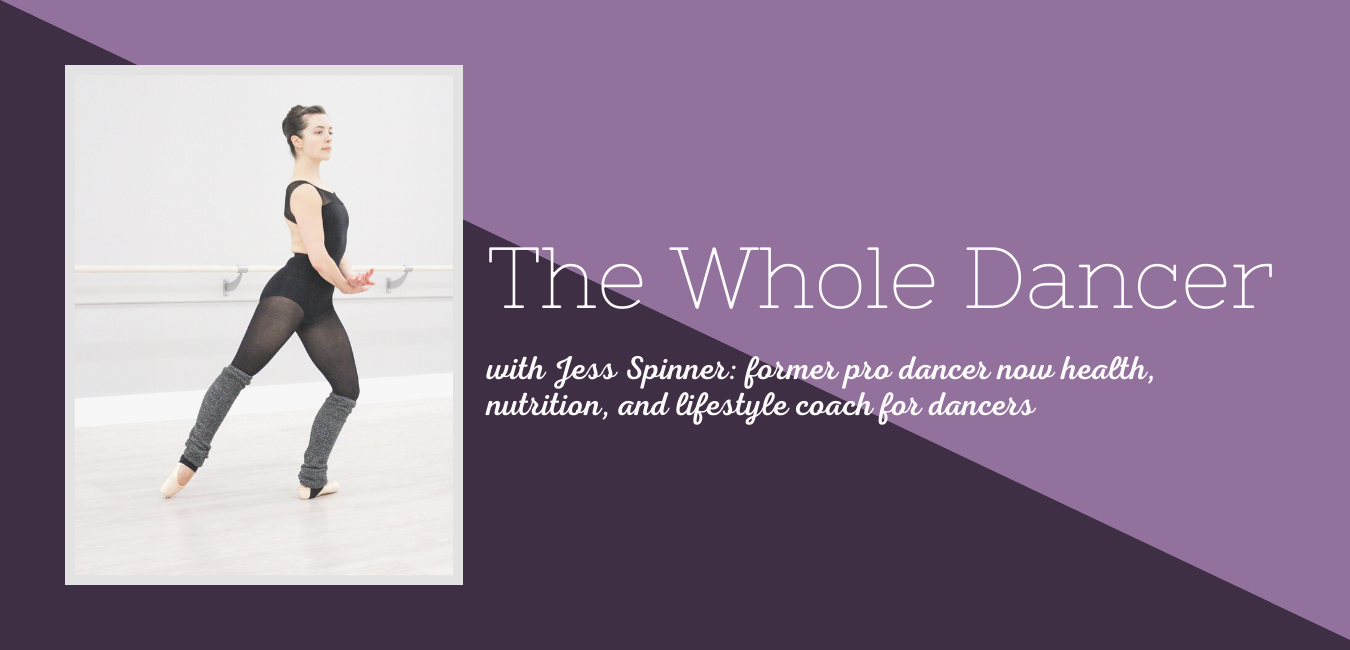In order to dance at a high level, you need to fuel yourself strategically. There’s lots of value in making thoughtful, sports-nutrition-focused food choices. However, for perfectionistic, type-A dancers, it can be a slippery slope into disordered or unhealthy eating.
Striking a balance takes lots of awareness and self-education (or supported education).

Establish a balanced relationship with food.
Before you can make strategic food adjustments, you have to have an easygoing food relationship. If you already feel like you’re obsessed with what to eat, making the “right” choice, or if the food is good, bad, healthy, unhealthy, then your food relationship needs attention first.
Start with the basics of establishing a balanced food relationship here.
When your food relationship is in a good place, you can start to look at what and how you’re eating and make adjustments that will benefit your dancing and help you feel amazing. The food relationship has to come first. Otherwise, you’ll likely be motivated by aesthetic pressure or other outside factors instead of focusing on what feels right for you personally.
Plan so you don’t have to overthink in the moment.
When you don’t have any plan at all, it can lead to constantly going back and forth and trying to figure out what the “right” choice is. When you plan and give yourself a variety of options that you feel good about, there are no wrong choices (and arguably, there’s no value in labeling any food choices as “wrong”).
Make planning simple by doing it on a day off when you have some time. Consider what your week looks like. What are your rehearsal hours (or approximate rehearsal hours)? What’s your daily schedule like? Will you have time to go home between commitments to get meals or snacks, or should you have all your food ready to go for the day?
Once you’ve thought through the schedule, come up with desirable, filling, and nutrient-dense food choices that will satisfy your caloric and nutritional needs. If you’re unsure exactly how much you might need, bring a variety of options that you enjoy. It’s much better to bring too much than not enough.
Stay connected to your personal needs.
Dancers need a lot of food to perform well, but dance culture can be quite toxic and often promotes restrictive eating patterns. Many dancers aren’t actually eating enough, so you may look around and feel like you’re eating more than everyone else. It’s OK to be that person.
It really might mean you’re one of the only ones providing your body with the calories and nutrients needed to perform at your peak and recover from all the energy you’re using.
Release the need to monitor obsessively.
If you’re in the habit of tracking calories or macronutrients, this is a practice to really look at closely. There can be benefits. If you’re a dancer who otherwise might undereat and checking your numbers periodically helps you ensure you’re not falling below a healthy threshold, this might be OK.
However, if you’re tracking calories or macros in order to keep them unhealthily low, then it’s probably best to release the need to keep track. By releasing the obsession with numbers, you can better tune in to what your body actually needs.
Build more awareness.
If you don’t track anything and you feel relatively unaware of what you’re taking in, it might be valuable to take a closer look (as long as you’re 18+ and working with a nutrition professional).
So much of our approach to food is based on habit. You eat the same things and similar amounts without taking a closer look and considering whether it’s more than you might need or actually not enough.
Using an app for a few days to get a sense of your macronutrient intake can allow you to see if there are possible adjustments that could serve your goals. This suggestion is definitely not for everyone. However, with support, it may be a useful exploration.
Find your personal balance with nutrient-dense eating and “fun” foods.
There are plenty of foods that provide lots of energy without tons of nutrition. Things like desserts, processed foods, and some packaged foods come to mind. There is a place for those foods in a dancer’s eating plan.
The balance that works best for you is very personal, and often it changes over time. For some dancers, a nightly dessert of regular, store-bought ice cream feels great and helps them meet their energy needs. For others, this doesn’t feel good. Those dancers might opt for a bigger dinner or a homemade dessert where they can choose ingredients that they know work for them.
A key aspect of finding your balance is creating a neutral mental view of all foods. Research has found that using a food-neutral approach leads to better mental and physical health. When you stop moralizing food, you can make choices from a much more empowered place.
Seek support if you need more guidance.
Making these shifts in your food approach isn’t easy, and you might need support to find your truest balance. Schedule a complimentary coaching consultation here if you’d like to see how health, nutrition, and lifestyle coaching can support you!!
